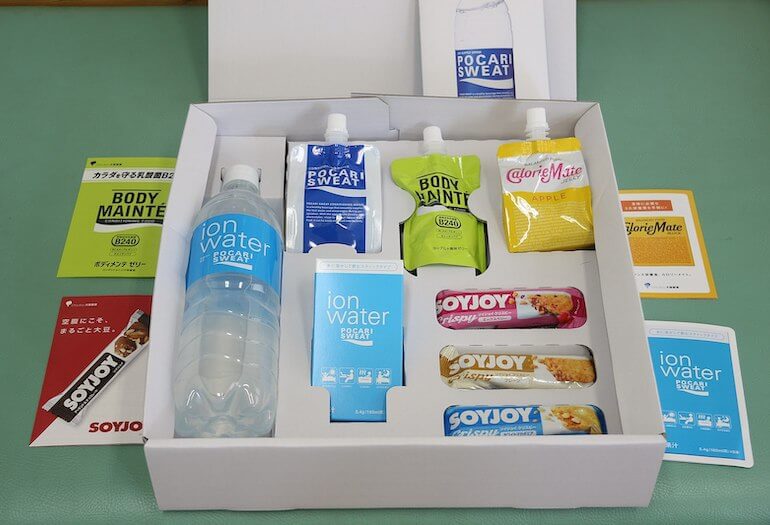

Selling products as a pack is one of the most common eCommerce strategies of all, found everywhere from groceries to consumer goods to software packages. This sales system allows you to adjust your prices to structural, shipping, and logistics costs, creating a better deal for your potential customer.
Bundle pricing is about optimising these pack pricing strategies, analysing which are the best products to combine and the variations in price with which they can be marketed, while still maintaining competitiveness in the market.
The advantages of bundle pricing
The use of bundle pricing strategies or sharing costs between products in the same pack is highly regarded by a large number of eCommerce businesses and marketplaces. In fact, these aren’t exclusively used by online stores that manage their own stock. They’re also used by giants like Amazon to increase their average transaction size.
For many, bundle pricing strategies are a key way to effectively cross-sell products in the same line. However, there are some differences between the strictest cross-selling strategies since, in these cases, the combination of products is already predefined in bundles.
If at this point, you’re still wondering what the advantages of bundle pricing are, consider the following:
- the optimisation of shipping costs and logistics for each order;
- a direct increase in the average transaction size;
- an increase in sales due to the call effect, after comparing different options; and
- the most competitive prices in the market.
The user’s perception of the packs
Both in the digital environment as well as in physical stores, users recognise the possibility of buying packs as a positive thing. The financial savings from these products are always well received by customers, so even when the need for more products isn’t there, they’re still more likely to choose this purchase option.
In eCommerce businesses and online stores, this perception is even greater thanks to the savings in time and effort that is involved in acquiring products directly as a pack.
On the other hand, for online shoppers, it’s also valuable to find different options in the same eCommerce store so that they can purchase the products both independently or in a pack. In addition, not having to look for the same products that “combine” together is a plus that few know how to say no to.
If it were necessary to highlight a negative aspect of bundle pricing strategies, you’d find it precisely in this small point. For many users, having to buy a pack of products when they only need one of them can be a sticking point. That’s why it’s so important to offer different options for individual or combined purchases.
When it comes to price manipulation, it’s also important to be able to determine as clearly as possible what the discount for acquiring the pack will be or if one of the products will be delivered “free” with the purchase, for example. In either case, at a minimum, you must show the percentage of total savings offered by buying the pack compared to the individual items.
How to define a bundle pricing strategy
Before launching a bundle pricing strategy, it’s important to have a list of all the items you’ll need to know to successfully define your strategy.
- Study your audience. This is the only way to discover the needs that lead them to specific products in your catalogue. Study their purchase histories and check which products they usually buy at the same time. This is the information you need to understand their approach to shopping and their interests.
- Browse and internalise the catalogues of your competition. If they already offer packs, it will be helpful to know which ones they include and at what prices. In addition, the use of competitor price monitoring software will allow you to identify when and how their prices change.
- Monitor your stock. Keep an accurate measure of the products you have in stock so that you don’t find yourself without the ability to undertake the sale of bundled products, above all if you also offer the option of purchasing them individually. One good option is to set aside stock for each objective based on their sales prospects.
- Consider your margins and profits. When setting the price for packs in your eCommerce business, it’s best to know in advance what your productions and generation costs are as well as the desired profit margin. These will be the elements that allow you to adjust the price while remaining profitable for your business.
How to do price bundling
Once all of this information has been gathered, you’ll need to decide which products will be included in this type of strategy and in what way. Based on this operation, you can choose between the different options for carrying out price bundling based on the type of product and the audience you’ll be targeting.
When selecting the sales options for each product, you’ll have three options.
- Mixed bundling: products can be bought in a pack or individually. To avoid losing those buyers who are unwilling to pay for items they might not need, you must always choose this option, even though it will always be accompanied by an ad with the advantages of the pack. An example of this is the accessories, spare parts, and replacement parts whose main component wouldn’t be necessary once purchased.
- Pure bundling: due to their characteristics, some products only make sense when sold as a pack, either for market reasons or even because of the costs this entails for the business. In this case, the sales volume may be diminished at some point, but it’s also necessary to examine if its sale is a good lure for those users that are looking for this specific product. For example, a pack with mini bottles of perfume will always be viable for the user, who will enjoy the extra product, as well as for the eCommerce business, who wouldn’t earn the same profit by selling these on their own at a minimum price.
- Discounts for cross-selling and upselling: the final option for product bundling, as we said at the beginning of this guide, is to offer specific discounts for the purchase of more than one unit, concrete savings on related products, or even better version of the product for a slightly higher cost.
Finally, bundle pricing strategies must also be adopted by the marketing teams themselves. They have a lot to offer in terms of distribution and even adaptation based on the channels through which they’re deployed. Undertaking unique initiatives of a markedly promotional nature can result in a significant boost in sales for any eCommerce business or marketplace.

Find out how Minderest can take your business to the next level.
Contact our pricing experts to see the platform in action.
Related Articles

AI Agents and Holiday Season: How to Adapt Your Pricing Strategy
Holiday season planning used to revolve around creative campaigns, emotional storytelling, and optimizing the user experience. However, a silent revolution is changing the rules of the game. The rise...
How Surveillance Pricing Works and Its Applications for Your Business
The term "Surveillance Pricing" might conjure images of corporate espionage and price manipulation. However, this initial perception hides one of the most sophisticated and powerful strategies in...